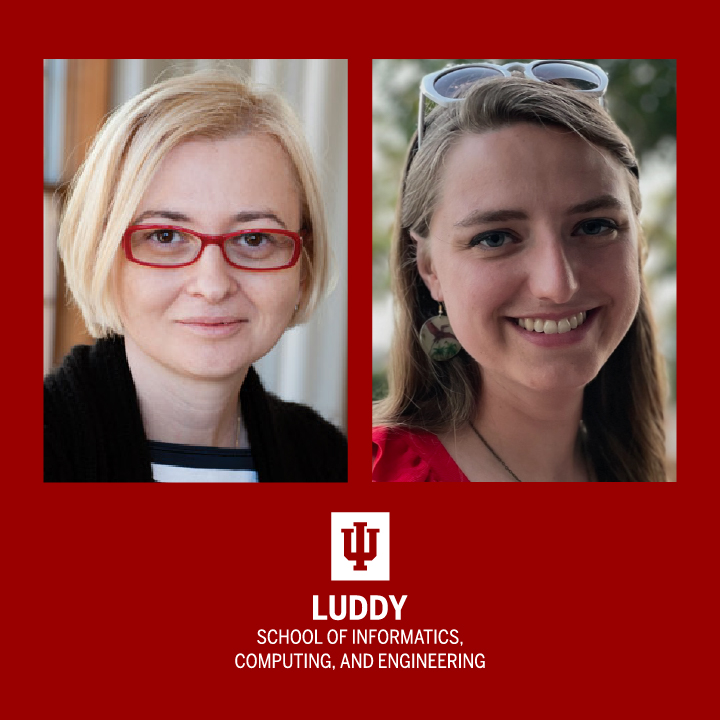
Interdisciplinary research is crucial in an ever-evolving high-tech world, yet impediments to do such research remain strong. Staša Milojević, professor of Informatics at the Luddy School of Informatics, Computing, and Engineering, and Monica Marion, an Indiana University Ph.D. student in Complex Networks and Systems and Folklore, addressed that problem and offered solutions in a paper published by PNAS.
They were the paper’s co-authors with Enrico Berkes, University of Maryland Baltimore County assistant professor of Economics, and Ohio State Professor of Economics Bruce A. Weinberg.
Milojević said the paper, “Slow convergence: Career impediments to interdisciplinary biomedical research,” detailed research showing that more needs to be done to support and retain most interdisciplinary researchers during their early post-Ph.D. years
“As part of a broader project focused on understanding interdisciplinary graduate training and its outcomes,” Marion said, “we investigated the question: If interdisciplinary research is the key to solving important, complex problems, why are there not more interdisciplinary researchers?
“In economic terms, if there is such a high demand for interdisciplinary researchers, why is the supply low?”
Researchers focused on biomedical fields andassembled a large dataset of biomedical scholars, their publications, and their educational history. They used the publications to map how interdisciplinary their work was over the length of their careers.
“We found that researchers whose early work is most interdisciplinary (the top 1 percent) during their grad school or shortly after were also the researchers most likely to stop publishing earlier in their careers than their less interdisciplinary cohort members,” Milojević said.
Half of the initially very interdisciplinary researchers stopped publishing after about eight years, which is close to the time when someone with a postdoc could be approaching a tenure review, while for more moderately interdisciplinary researchers, more than half were still publishing after 20 years.
“We also found that initially interdisciplinary researchers tend to publish less interdisciplinary work over time, while other researchers tend to become more interdisciplinary,” Milojević said. “Having most interdisciplinary researchers stop publishing sooner than the others, coupled with the decrease in interdiscplinarity for those who were highly disciplinary and remained publishing, might contribute to slow increases in interdisciplinarity.”
She said that despite a substation variation in the interdiscplinarity of graduate students at all levels of advisor interdisciplinarity, there is a clear tendency for students of more interdisciplinary advisors to conduct more interdisciplinary research themselves.”
The Proceedings of the National Academy of Sciences (PNAS) is an international peer-reviewed journal of the National Academy of Sciences. It publishes high-impact, original research in social, biological and physical sciences.

